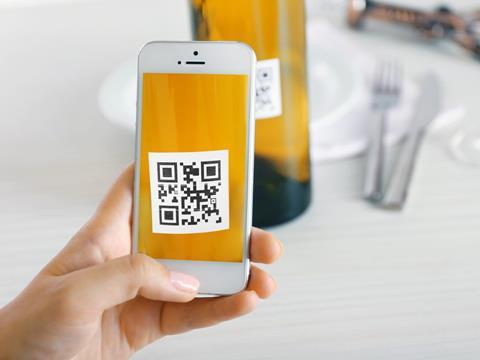
Polytag and the not-for-profit company DDRS Alliance have joined forces to develop and adopt a Digital DRS, or deposit return scheme, as further delays push the launch date for a UK-based DRS back to 2028.
DDRS Alliance members include Circularity Solutions, Recycl3r, ACE UK, Tetra Pak, and Valpak. Alongside Polytag, the organizations intend to combine their respective knowledge and experience to ‘demonstrate the viability and convenience’ of a Digital DRS – anticipating the development of a ‘global blueprint’ for use in the UK and other major European countries.
Both organizations make use of GS1 Digital Link QR codes. GS1 predicts that, from 2027, brands will start to replace conventional product barcodes with two-dimensional smart QR codes, which are set to enhance visibility across supply chains and help retailers authenticate products.
Furthermore, customers are expected to receive a range of additional features and benefits via ‘rich, dynamic content’, with loyalty and reward schemes implemented as an incentive to participate.
‘Future-proofed’ QR codes are also being supplied to brands and retailers by Polytag in order to operate a Digital DRS.
A Digital DRS Charter published by the DDRS Alliance outlines principles that proponents and stakeholders alike are encouraged to sign up to.
“Deposit Return Schemes have demonstrated across Europe that consumers respond to a financial incentive to return drink containers for recycling,” said Duncan Midwood, co-founder of DDRS Alliance. “Digital DRS brings the solution to the modern day by providing consumers with a more convenient solution mirroring their lifestyles.
“DDRS Alliance is uniquely positioned to coordinate the development of Digital DRS ensuring tech companies, such as Polytag, can deliver their solutions within a well-defined and standardised framework. We are excited about working more closely with Polytag and hope DRS stakeholders across the World will sign up to the Digital DRS Charter and join us.”
“Countries across Europe, like Serbia and Spain, are already seeing and reaping the benefits of digitally supported recycling systems,” added Polytag CEO Alice Rackley. “It is high time that more nations, including the UK, do the same.
“Our collaboration with DDRS Alliance will ensure we can strengthen our position and continue to demonstrate why a digital scheme will be better for brands, retailers, government, consumers and the environment. We will integrate our scalable, practical, and above all, ready-to-deploy solution into existing infrastructure across the UK and further afield.”
Both organizations have conducted trials in an effort to demonstrate that a Digital DRS is appealing to consumers and, on a technological level, ready to implement. In one example, DDRS Alliance worked with Powys County Council and WRAP Cymru to trial a large-scale digital deposit return scheme in Brecon, Wales.
Participants were invited to scan labels on their drinks containers via their smartphones, recycle them, and claim cash rewards. Reportedly, 1500 users returned 19,000 containers; 58% of that packaging came via kerbside collections – demonstrating that consumers prefer to be offered a choice between home, community, and retail-based return options.
A follow-up urban trial from DDRS Alliance is said to be in the pipeline. Polytag’s technology is planned to run alongside that utilized in the Brecon trial.
In its own response to Scotland delaying its deposit return scheme from its original launch date in August 2023, Lidl recently launched a bottle return scheme across its supermarkets in Glasgow. The retailer aims to use its in-store reverse vending machines to recycle 10.5 tonnes of plastic and aluminium every month.
If you liked this story, you might also enjoy:
Report: The ultimate guide to global plastic sustainability regulation
The Brief: Oxo-(bio)degradables: the who, what, and why of breaking down fossil-based plastics
Sustainable Packaging Summit: How Kraft-Heinz uses collaboration to drive innovation
The Brief: Using ocean-bound plastic in packaging – how, why and should we?











No comments yet